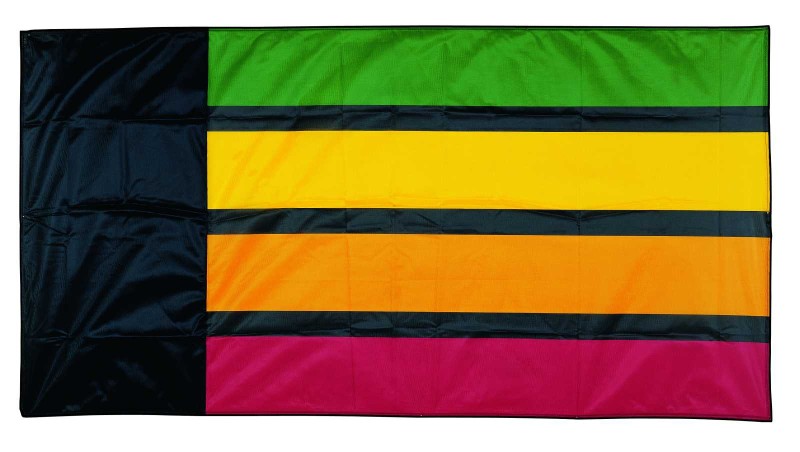APA 351
1001
FAHNE FÜR OST-TIMOR
FLAG FOR EAST TIMOR
2001
Wica-Fahnen, Ravensburg, Germany (prototypes)
KunstHausWien, Vienna
Hundertwasser designed the “Flag for East Timor” to support the independence movement of East Timor, an island nation in Southeast Asia.
- Egon Schiele Museum, Tulln, 2004
- Christuskirche, Mainz, 2008
- KunstHausWien, Vienna, 2011
- W. Schmied, Hundertwasser 1928-2000, Catalogue Raisonné, Cologne, 2000, Vol. I, p. 265 (c)
- A. C. Fürst, Hundertwasser 1928-2000, Catalogue Raisonné, Cologne, 2002, Vol. II, pp. 1059 (c), 1120
- F. Hundertwasser / P. Restany, Hundertwasser, New York, 2008, pp. 116/117 (c)

Hundertwasser's comment on the work
The flag of East Timor
The flag of independent East Timor
is a symbol of hope, beauty and happiness.
Emerging from the horrors of oppression and manslaughter,
a visible sign of pride and development into a bright and colourful future.
The flying colours on the right side of the flag indicate
the position of the nation on the eastern part of the island of Timor.
The four horizontal colour stripes red, orange, yellow and green
are part of a rainbow which stands for harmony.
The red stripe symbolizes the heroic birth of the nation
through the blood and the heroic struggle and sacrifice of east Timor's people.
The other stripes stand for the gradual ascending to hope and happiness,
symbolized by the green as the highest level.
The strong black lines between the stripes underline the new nation’s steps upwards.
The flag which length is twice the width
can be divided and folded into four parts in each direction.
The black rectangular next to the flagstaff is one fourth
of the length and symbolises the dark bygone ages,
mourning those who gave their lives,
setting off the bright colours of the reborn nation East Timor.
The horizontal rainbow colours fly well in the wind,
radiating the friendship of independent East Timor
to all nations of the world.
Hundertwasser
30 October 1999
New Zealand